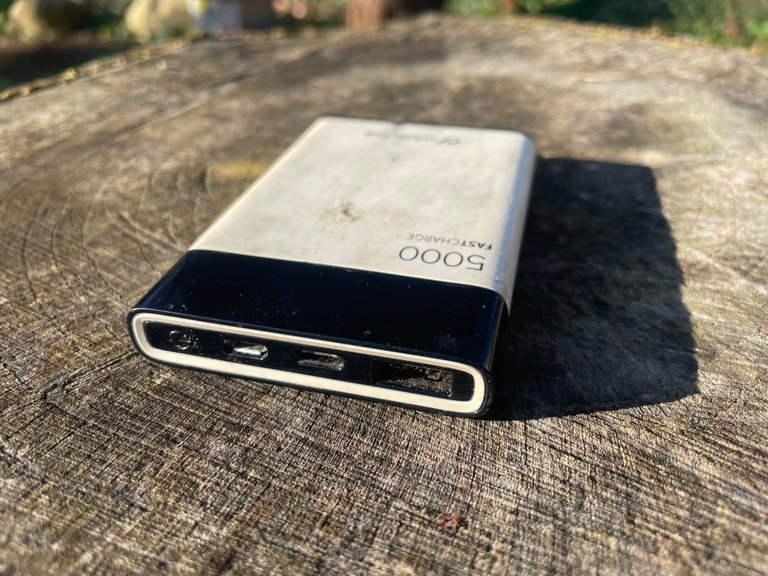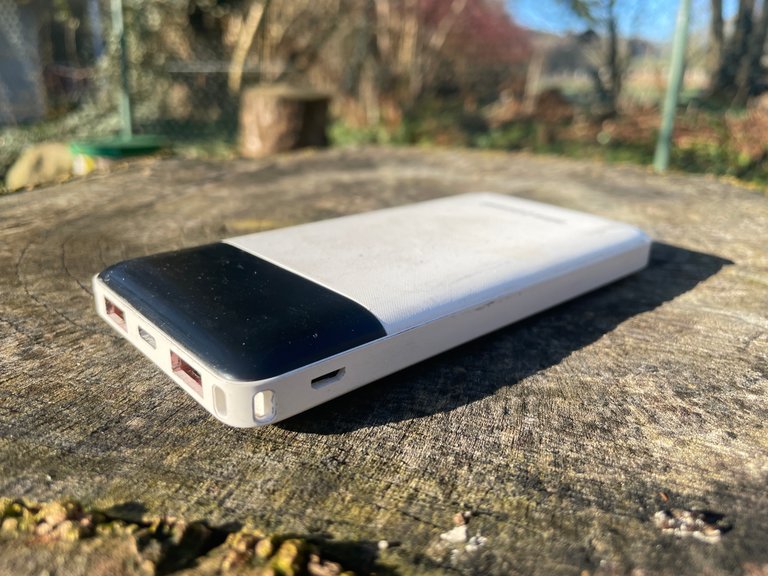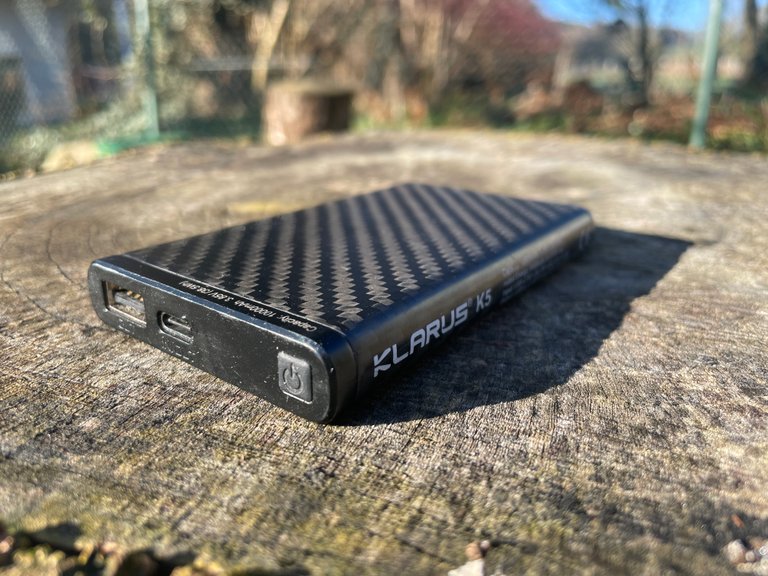How to choose powerbank for bikepacking

Welcome to the detailed guide how to choose the best powerbank for bikepacking There are many half-truths and myths that I will try to describe, unravel and explain without going into technical details. Let’s just stick to what’s important
In the first part, we will explain some of the terms and features of powerbanks that may be important to you or that you may not need to deal with at all.
The second part will be a series of mini-reviews of powebanks I’ve used in my 10 year bikepacking career.
In order to keep this guide from getting too big, I won’t go into it here:
- Charging a powerbank via dynamo or solar panels
- Wireless charging
- Building your own powerbanks from 18650 cells and electronics from China—I’ve tried, I don’t recommend it.
📑 Parameters of powerbanks
List of parameters of powerbanks which are important for bikepacking 👇
📦 Capacity
There is a difference in what the capacity is realistically stated and how much of it you actually charge. It’s not entirely that manufacturers lie to you, but there are some losses when transferring power or varying the voltage of the device being charged that cannot be avoided “outside of a vacuum”. Every powerbank is differently efficient at this, and unfortunately you don’t often read the real result. The only way to find out is to try it.
Capacity is given in mAh or Wh. Count on 65% efficiency (I’m basing this on powerbank comparison, or the ratio between advertised and output mAh). I.e. if you had a 6500 mAh phone and a 10000 mAh powerbank, you would only charge it once. You can’t say it like that universally, but it’s some average condition.
How do you decide how much capacity you need? You can do it scientifically—take the battery capacities of all the devices you want to charge—phone, navigation, lights, etc. and divide each by the number of days the device will last. Factor in (ine) efficiency = divide the number by 0.65 and you get the number of mAh you need per day.
Example:
- I take a phone that has a capacity of 4000 mAh and lasts 2 days without charging = 2000 mAh consumption per day * A navigation device has a capacity of 600 mAh and lasts 3 days = 200 mAh consumption per day
- The consumption per day is 2200 mAh, after factoring in (in) efficiency 3300 mAh. I.e. if you buy a 10000 mAh powerbank you can go about 6 days without an outlet (after 2 days your phone will run out of power and you will have to start using a powerbank that can charge for 3 days)
Consider carrying more powerbanks It will be worse in terms of weight, but you will have a backup if one powerbank goes bad. And it has another advantage—it takes less time to charge two smaller powerbanks than one large one—if they have the same input power.
⏩ Powerbank charging speed
Charging speed is important especially if you don’t sleep in hotels but try to charge during the day—in restaurants, shops, wherever they let you.
If you have time to charge your powerbank overnight, speed doesn’t matter so much unless you have a huge capacity.
Charging powerbanks doesn’t work in a linear fashion. Specifically, the faster you charge, the more the charging slows down around 80% capacity to avoid damaging the cells. It is therefore not always efficient to wait for a full charge.
Estimated charging speed up to about 80% at different speeds 👇
| Capacity (mAh) | 10W charging | 20W | 30W |
|---|---|---|---|
| 5000 | ~2 h | ~1 h | ~40 min |
| 10000 | ~4 h | ~2 h | ~1 h 20 min |
| 20000 | ~8 h | ~4 h | ~2 h 40 min |
The charging speed is defined in W and is limited by the weakest link. I.e. if your powerbank has a charging speed of 20W, you should have a cable and charger that can handle the 20W. The faster the charging speed, the heavier the powerbank and charger often are.
You can also get faster speeds by having more powerbanks and chargers (or ports).
Beware powerbank charging speeds and the speed at which a powerbank charges your device may vary. Powerbank charging speeds are often the primary indication in the product name.
⏪ Powerbank charging speeds
In my opinion, this figure is not important for bikepacking. Or on the contrary, the lower the speed, the better. Lower speed is more efficient. You have the powerbank with you all day, so you don’t have to rush to charge it.
🚪 Inputs & Outputs
It’s ideal for a powerbank to have at least two ports and at least one of those ports to be USB-C. Generally there’s better support for faster charging and it’s becoming standard. At the same time, it can act as both an input and output port. This can be a problem if you wanted to move power from one powerbank to another and connect them with a single USB-C cable—which will charge which?
I think that USB-C is a bit more flimsy than classic USB-A, which is especially noticeable on the bike with all the vibrations. It’s definitely more economical to use a powerbank in a backpack somewhere where your body absorbs the shocks, rather than having it in your bag. A lot of my USB-C ports are wobbly, but on the other hand, I’ve yet to have one go completely out.
The two ports are handy in case one of them fails. I’d also try to avoid powerbanks with integrated cables that can’t be swapped out.
🤺 Resistance
Special powerbanks are made with resistance to mechanical damage, water and dust. They weigh a lot more and I don’t think it’s downright necessary for bikepacking. You can only use the device if it’s dry anyway.
The basic water protection is handy because you probably can’t avoid some moisture.
🔋 Charge indicator
I recommend powerbanks that show charge status as a number. The diode system is inaccurate and hard to see in sunlight. A clear number is the clearest you can get and allows you to plan whether or not to charge.
🤏 Low current mode for charging watches
Some devices, like headphones or smartwatches, charge under lower current. Some powerbanks may disconnect them because they mistakenly think nothing is charging. Not all of them do this.
Some powerbanks have a special mode—called low current mode—you can usually read about it in the manual—that can charge such devices. The power transfer will be more efficient and you will save some capacity.
🚶 Pass Through Charging
I’ve seen this on a lot of powerbanks, but I’ve never really understood what it’s really useful for. The basic principle is that you plug the powerbank into the charger and another device into the powerbank. The powerbank won’t charge itself, but primarily the device, and will eventually use the unused current for itself.
Now what good is it, wouldn’t it be better to charge the phone directly from the charger? In some situations, sure—the powerbank would be an unnecessary intermediate link. I can imagine a situation where I want to charge both the phone and the powerbank overnight. Then I’ll plug it in series. It would work without pass through, this way the function just speeds up the process. If the powerbank didn’t have pass through, it would charge itself first, then conquer the phone, then conquer itself. Which would take longer, but the result would be the same.
👁️ What parameters I’m looking at
Basically, I choose according to:
- Charging speed of at least 18W
- 2 ports, at least one of them USB-C
- Lowest weight possible
- Charge indicator by number
👷 Experience with specific devices
The oldest powerbank I’ve ridden and still have it is some Cellularline model with a 5000 mAh capacity that isn’t even sold anymore. It weighs 113 grams and has 3 ports USB-A, microUSB and USB-C. Charging speed of about 10W. There are definitely better ones available now. The capacity is not bad at all. A Garmin Edge like this can charge 3× and has a numeric charge indicator.

🤔 Nitecore NB10000
Then I slapped my pocket and bought the “best powerbank in the world” - Nitecore NB10000 Gen 2 with 10000 mAh capacity and 150 grams weight. In carbon, like my bike. Charging speed 18W. It also has a low current mode. There are two ports in the body—USB-A and USB-C. Water splash resistance. I saw they’re making a newer version with two C’s. Except—it shows charge status with 4 LEDs, which is not ideal. But what is the biggest problem—in my experience it can be easily broken.
I carried two funky new ones to Moravia Divide and one of them didn’t survive. From what I’ve read since then reddit forums, I’m certainly not the only one who has had a problem with their reliability. On the other hand—there are negative reviews for all powerbanks and a lot of people are fully satisfied with it. Maybe I was just unlucky.
Read full review on this website.

🔋 Alza power
After my experience with Nitecore, I needed something different, and fast. I figured those few grams wouldn’t actually make a difference and went for the AlzaPower Parade. It has a 10,000 mAh capacity and weighs 224 grams, but has 4 ports, a charge indicator digit and an 18W charge rate. It just works, I could buy several of them because they are quite cheap. For the 15 euro it costs now, I’ll buy 5 of them within the price of NB10000 and still have some left over. And the extra 70 grams—what’s that?
I have three, all pretty much dirty from mother earth, and they still work.

🙇 Klarus K5
In the end, I decided to slap myself in the pocket again and I bought another carbon powerbank, whose biggest disadvantage is probably the price - Klarus K5.
Capacity 10000 mAh, weight 156 grams, two ports—USB-C and USB-A, charge status indicator in percentage. It also has a low current mode. In addition to the price, I would find a second disadvantage—sometimes I’m not sure if I’m reading the charge status in reverse.
Read full review on this website.

Published | #Bikepacking
💬 1 comment
What are your thoughts? 🤔 Feel free to ask any questions 📫
Guido
Not sure how old this article is, but I just came accross 10.000mah powerbanks that can be plugged directly into a wall socket. Acting as a charger for your device and charging the powerbank itself. This would save a seperate charger and cable. A nice small bank that easily can be plugged in anywhere on the go.
4/14/2025, 8:30 AM |